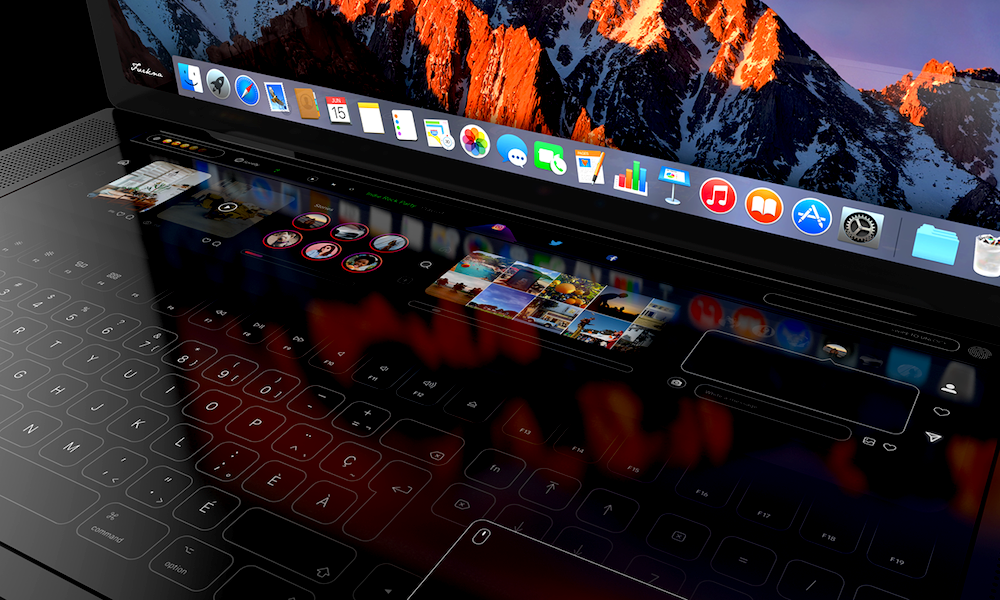Macs with Face ID and Auto-Wake Likely to Be Coming Soon
 Credit: Behance / FVRKNA
Credit: Behance / FVRKNA
Toggle Dark Mode
While Apple’s use of Face ID is far from ubiquitous even on its iOS devices — only the iPhone and iPad Pro support it, while Apple’s other iPads are still saddled with Touch ID — the one area in which its absence has been more conspicuous is over on the Mac.
Since the TrueDepth camera hardware to support Face ID is costly, we can sort of accept the lack of Face ID support on Apple’s lower-end iPad models, and let’s face it, Apple’s recently-refreshed iPod touch didn’t get even Touch ID, much less Face ID. However, there’s far less of an excuse for Apple to omit it on a $2,000+ MacBook Pro or a $3,000+ iMac, which could also benefit from the TrueDepth camera in other ways.
How Would Face ID Work on the Mac?
Earlier this year, we heard rumours that Apple was testing a touchscreen Mac that would also support Face ID, although we weren’t quite sure what to make of these at the time, as additional details were sketchy, and the reports weren’t well-sourced. This was followed, however, by a parenthetical mention of Face ID in a patent application for the Touch Bar that added weight to the idea that Apple was exploring Face ID on the Mac itself.
While the patent application in question focused on adding a Touch Bar to Apple’s standalone Magic Keyboard — which would allow the technology to be used with the iMac and Mac mini — it also offered up Face ID as the answer to the burning question about how Apple would address having a separate Touch ID sensor and T2 chip that wasn’t physically integrated with the associated Mac. In short, Apple wouldn’t need to build a Touch ID sensor into a Magic Keyboard at all if the Mac itself had a Face ID sensor.
That particular patent, however, made mention of a retina scanner rather than the TrueDepth camera found on the company’s iOS devices, suggesting the possibility that the technology could go in a different direction on the Mac, although it’s more likely that Apple is simply covering all of the bases here.
Waking up to Your Face
Now Apple has been granted another new patent, as reported by 9to5Mac, that outlines a much more sophisticated version of Face ID than what’s used on the iPhone and iPad Pro that would not only offer Face ID authentication, but also prevent the Mac from going to sleep when somebody is in front of it — similar to the attention aware features found on the iPhone — and allow a Mac to automatically wake up and authenticate the user when they approach.
The function is hard to decipher accurately, as it’s explained in “rather dense patenteze” (as 9to5Mac puts it), so it’s unclear whether the Mac would only wake up when the authorized user approaches it, or whether it would wake up for any person, or any motion, but only unlock for a recognized user. It’s also not clear whether this would simply unlock a sleeping Mac, or actually offer full boot and login authentication for a Mac that’s in fact switched off.
However, while it’s not expressly laid out in the patent, the technology seems like it would leverage the “Power Nap” feature already incorporated into Apple’s Macs, which allows them to perform background tasks while sleeping. In this case, it’s likely that it wouldn’t function on a Mac that’s been completely powered off, and is more likely designed simply to wake a Mac when a user approaches it. Basically, in addition to performing Time Machine backups, fetching mail, and syncing iCloud data, Power Nap could keep the camera awake to look out for somebody approaching the Mac, powering up facial recognition features when a user approaches, and only waking the Mac up if the person is identified as the authorized user.
Naturally, much of this would likely be more useful on desktop Macs, and the iMac in particular, but there’s no reason to rule out the addition of the feature to Apple’s MacBook lineup as well. Face ID by itself would be extremely useful, and of course many users still leave their MacBooks sleeping on their desks with the lid open.
Of course, Apple files a lot of patents for features that never see the light of day, so the mere existence of these patents doesn’t guarantee that Face ID is coming to the Mac any time soon, but with the technology having arrived on the iPad Pro, the MacBook, at least, does seem like the next logical step, and with a high-end (and expensive) 16-inch MacBook Pro coming this fall, it seems like as good a time as any for Apple to introduce Face ID to the Mac.
[The information provided in this article has NOT been confirmed by Apple and may be speculation. Provided details may not be factual. Take all rumors, tech or otherwise, with a grain of salt.]






